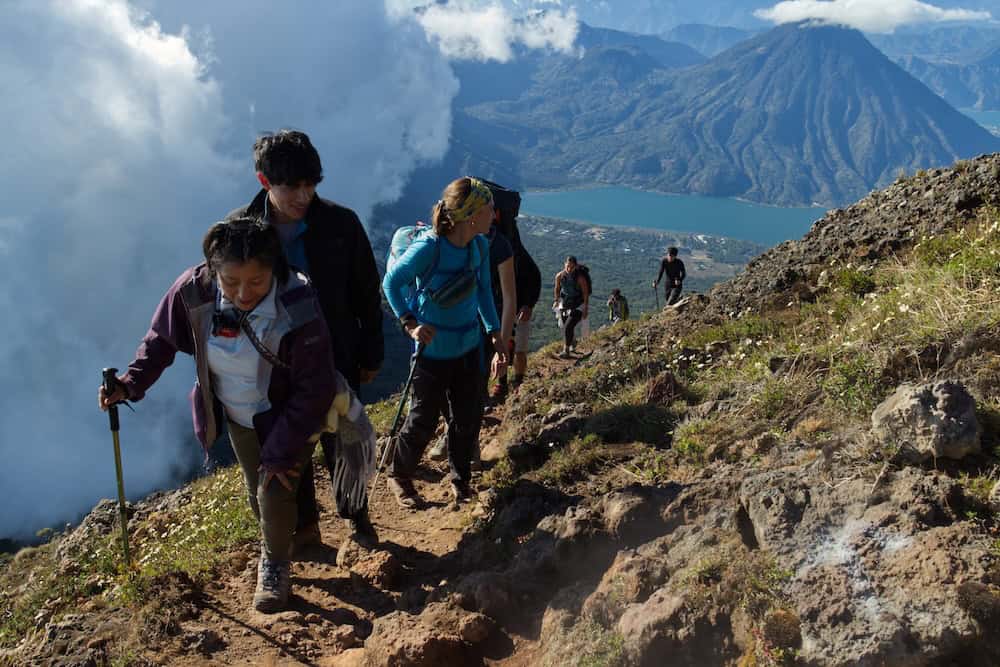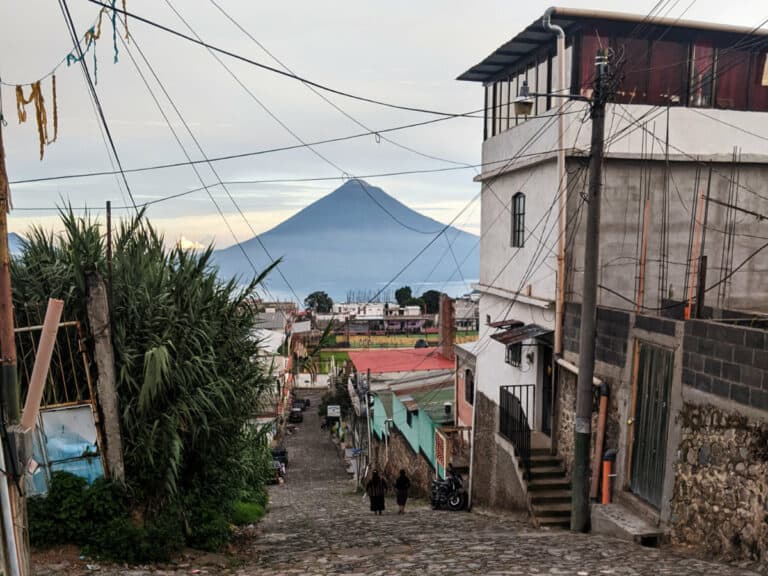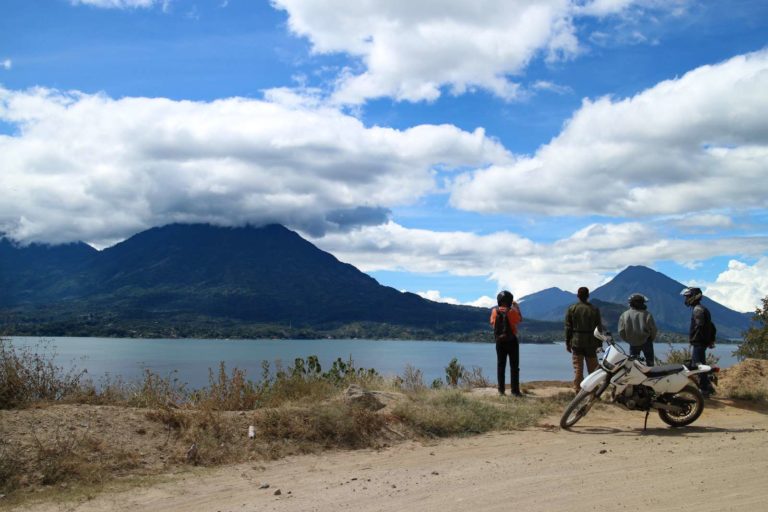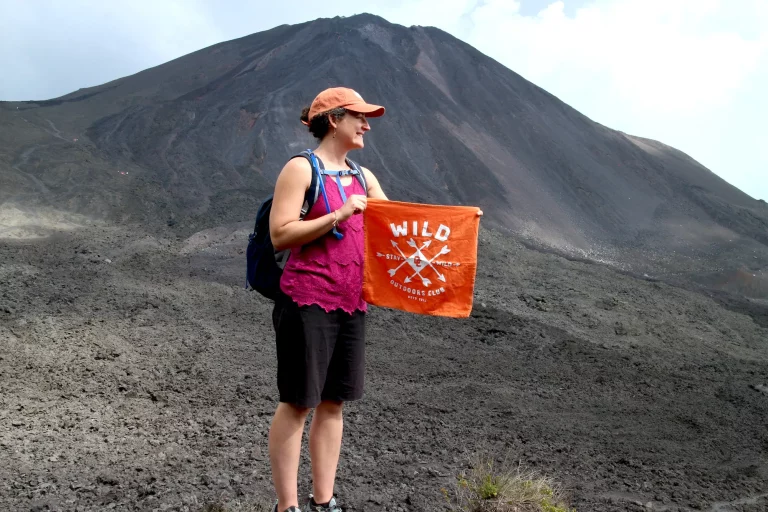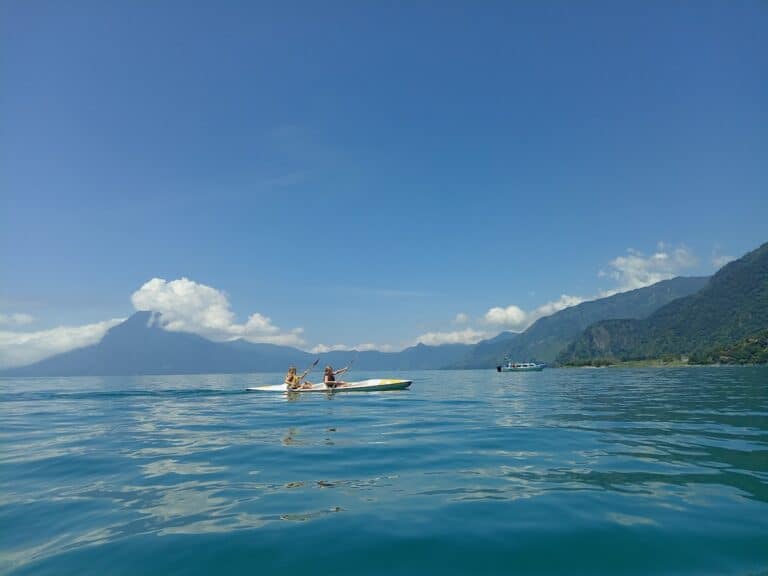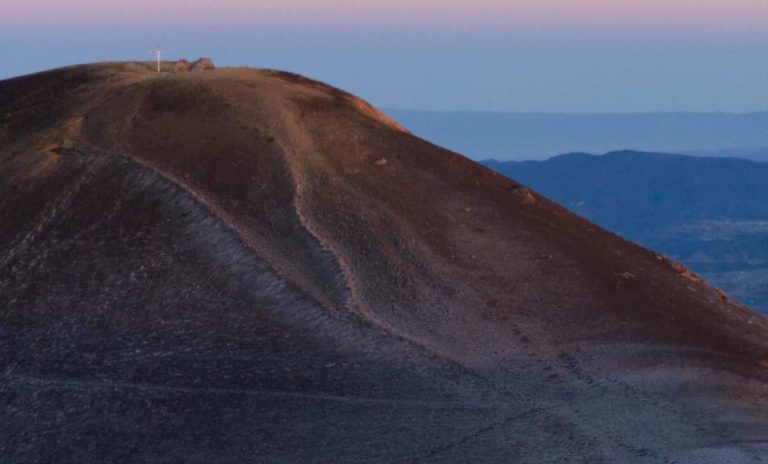Atitlán Volcano Hike: A Rugged Adventure
Do you dream of standing among the mystical steam vents of a volcano while gazing down at one of the world’s most breathtaking crater lakes? If so, put the Atitlán Volcano hike on your must-do list.
I finally got my chance to tackle this stratovolcano, and I can tell you, it’s absolutely worth the effort.
In this guide, I’ll walk you through everything you need to know—trail details, fitness requirements, and gear recommendations—so you can plan your own unforgettable trek in the area of Guatemala I call home.
Quick Facts About the Hike
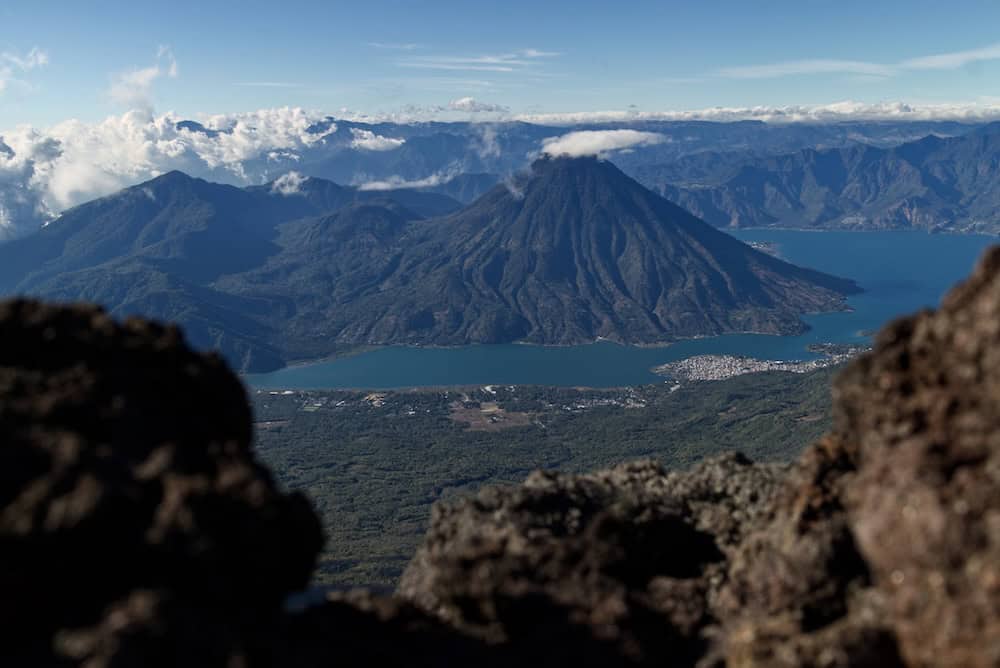
Difficulty: Advanced.
Height: Atitlán is 11,604 feet (3,537 meters) above sea level.
Elevation Gain: My fitness app recorded the elevation gain as 5,492 feet (1,674 meters) from the trailhead to the summit.
Roundtrip Distance: Approx. 10.5 miles (17 kilometers)
Available Routes: Two, via Santiago or San Lucas Tolimán. (This post is about climbing Atitlán Volcano from Santiago, not San Lucas Tolimán.)
Time to climb: This varies depending on your fitness and load. The hike took my group a total of six hours with heavy packs and long breaks to give those who were struggling a chance to catch up and rest. With daypacks and shorter rests, you could make it up more quickly, perhaps in three hours.
Campsites: Two, one 45 minutes from the summit, another at the summit
Dog friendly: Yes (Assuming your dog is ready to hike a volcano.)
What is the climb like?
The trail winds through a forest filled with slanting beams of light and the chirping conversations of hummingbirds. It gets steeper and steeper as time goes on, winding less and less, until it morphs into a strenuous vertical climb over rocks, boulders, and slippery layers of dirt.
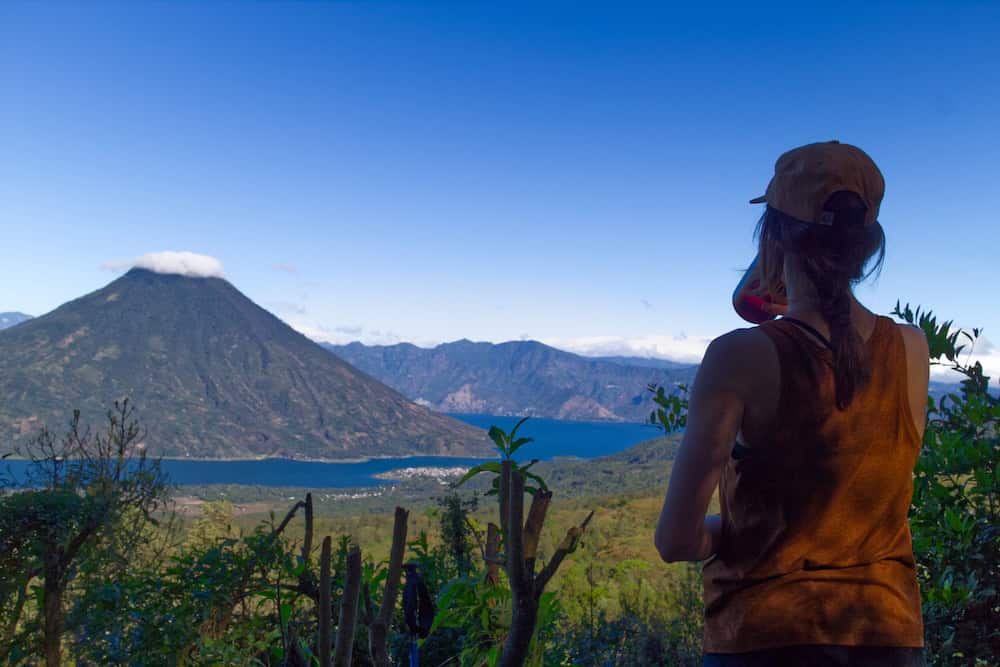
Eventually, the trees disappear, and the air thins. The summit is close now, and the path begins to zigzag up and up a furiously steep slope covered in sharp chunks of volcanic rock.
Clouds surround you like water-vapor curtains, blowing away in the wind to reveal the ridges and grooves of valleys and hills, the striking blue of the lake, and nine other volcanoes singing their own siren songs of adventure.
At the summit, steam vents whisper from clefts in the soil, a reminder that this sleeping giant still breathes.
During sunset, the sun becomes a gleaming ball of red and peach. Mist blows over you, immersing you inside moving rose-colored clouds.
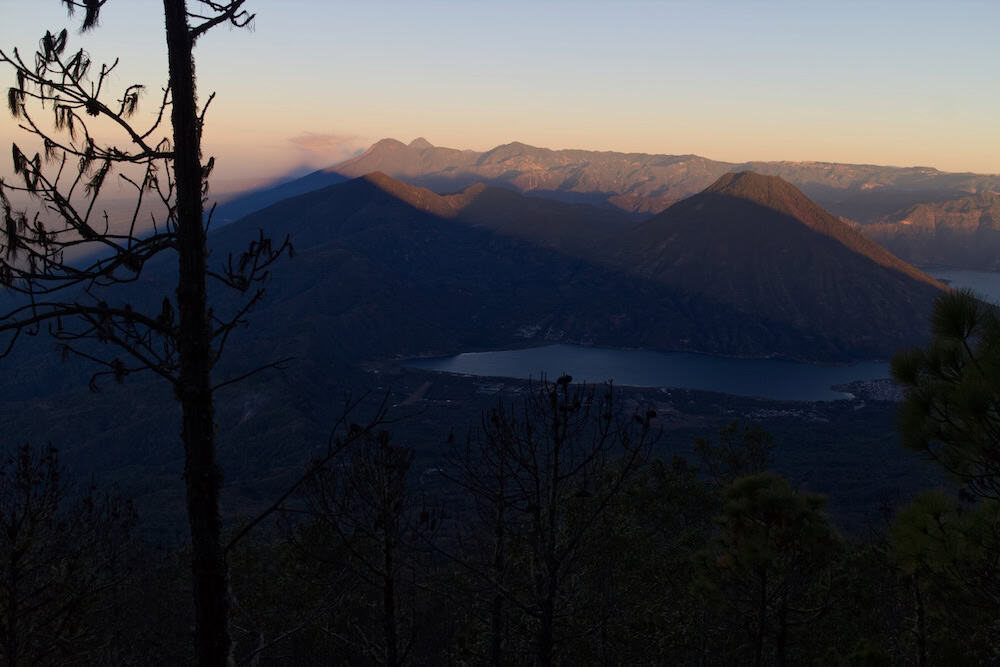
After dark, layer upon layer of stars light the sky. At sunrise, Atitlán casts its triangular shadow over a landscape painted in warm golden ridges and soft pools of shadow.
How hard is the Atitlán Volcano hike?
Atitlán is challenging. I’d say it’s a tad easier than Acatenango because the effects from the elevation aren’t as noticeable, and the traction is better.
I’d heard that the last push to the summit was brutal, straight, steep, and full of loose rocks. But the steepest part actually comes before that–where the trail ascends through a rocky vertical section of forest leading to base camp.
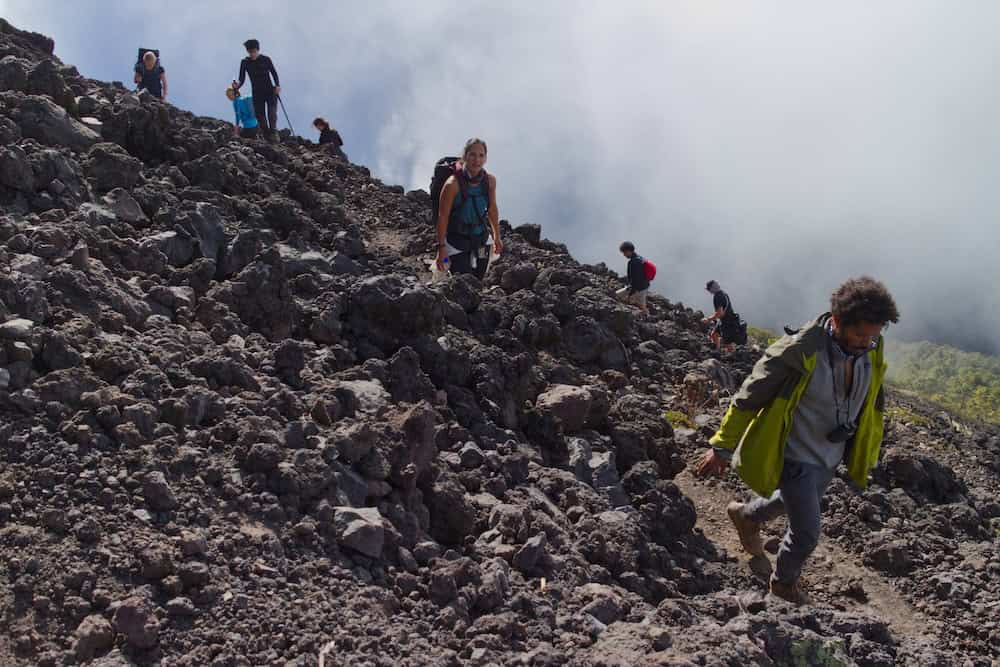
The final section before the peak consists of long, gradual zigzags. Traction, especially with the help of a walking stick, wasn’t horrible (at least compared to the deep sand of Acatenango). But a fellow hiker explained that this part can be a lot more challenging in the rainy season because the water pushes loose rock onto the trail, making it more treacherous. I was fortunate to summit after the trail had been cleaned up.
That said, the hike wasn’t easy.
Heavy packs, trekking poles, and stretch breaks
I started off with a 48-pound backpack bearing me down. The first hour was grueling. My pack was top-heavy and uncomfortable. After I stopped and re-packed parts of it, drank some of my water and gave away a few snacks, I did better.
I don’t usually use a walking stick, but the hiking pole the tour company lent me helped me keep my balance with the heavy backpack.
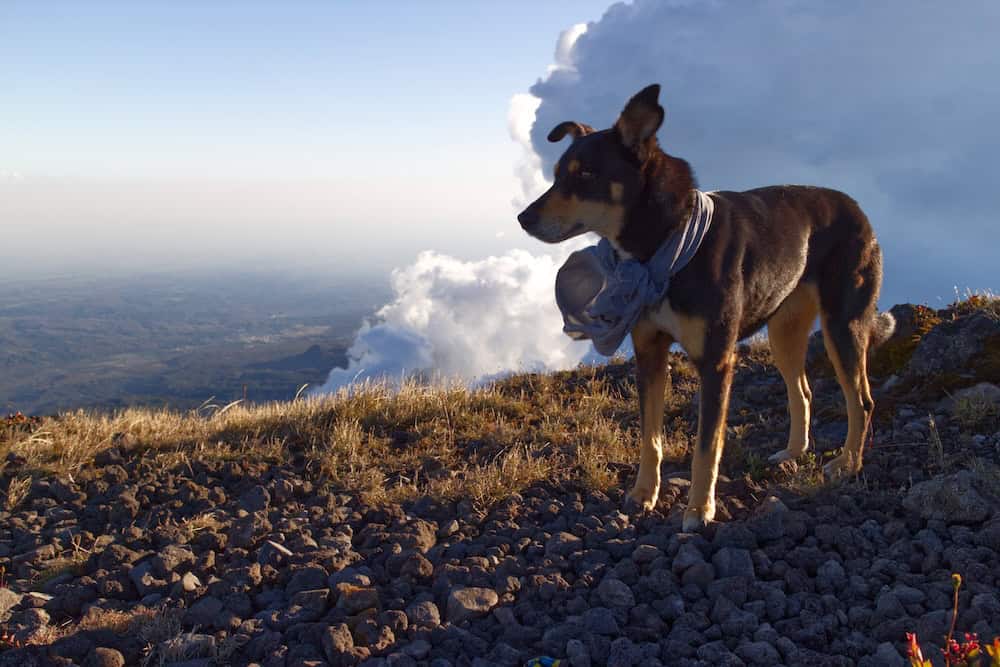
Every time I was ready to keel over (#slight exaggeration), we stopped for a rest, and I shed my pack, gave my dog a drink of water, and stretched. After a break, I was ready to go on again. Conversations with my fellow hikers helped the time go by.
After five hours, we made it to base camp. We took two hours to eat lunch, rest, and set up our tents before packing extra layers for the final 45-minute climb to the summit. By then, I didn’t have to carry much, and there was the beauty of the summit to look forward to.
A note on training and physical fitness
I always recommend training before a volcano hike. It makes a massive difference. Feeling like you’re about to pass out on a climb is no fun. Trust me. Been there, done that, hope to never do it again.
Training ahead of time will make the experience 1000 times more enjoyable.
How I Prepared
I already had a decent fitness base thanks to my weekly workouts, but I supplemented them with hiking the three weekends before the hike.
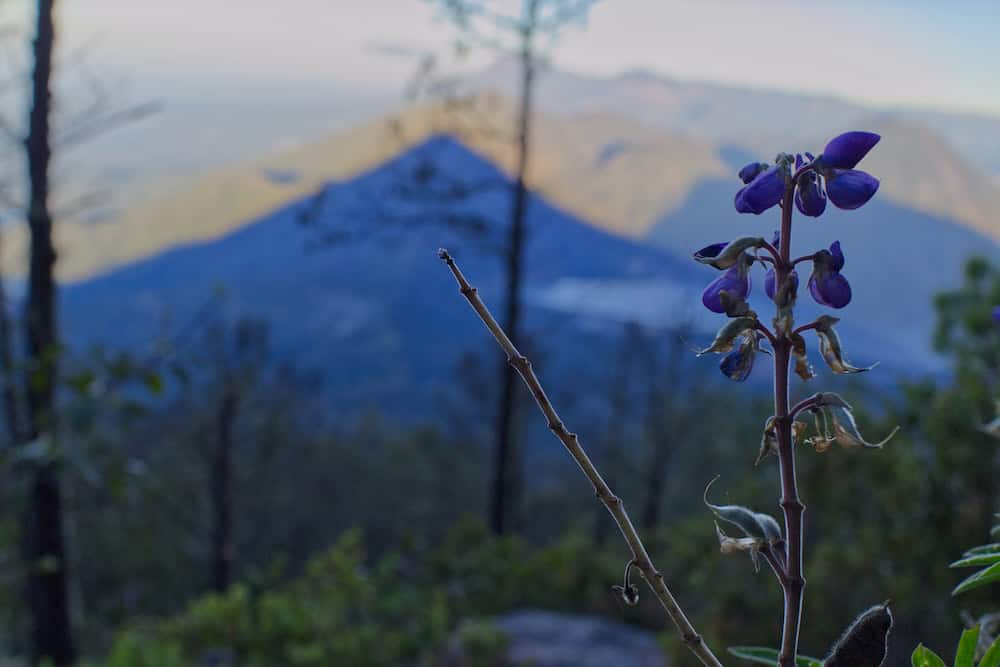
I threw in a couple of walks up the steepest hills in my town during the week, carrying my hiking backpack filled with weights. Then, on the last weekend before heading to Atitlán, I hiked 9.3 miles (15 kilometers) with a 45-pound backpack. During the following five days, I focused on muscle recovery. Because, funnily enough, I was more sore after that training hike than I was after the actual volcano climb.
Training (especially that final training ruck) boosted my fitness and my confidence.
Camping on Atitlán
There are multiple places to camp on Atitlán, including several rest areas at regular intervals on the climb. You can camp at these in a pinch, but the best options are the forest base camp and the summit.
I’ll break them down for you here.
Forest Base Camp
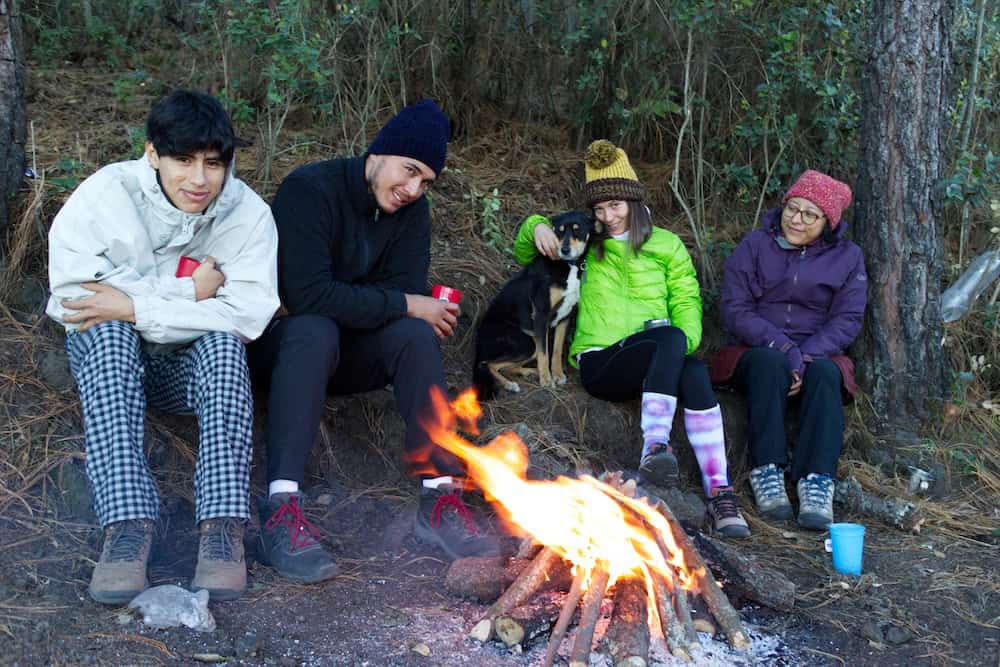
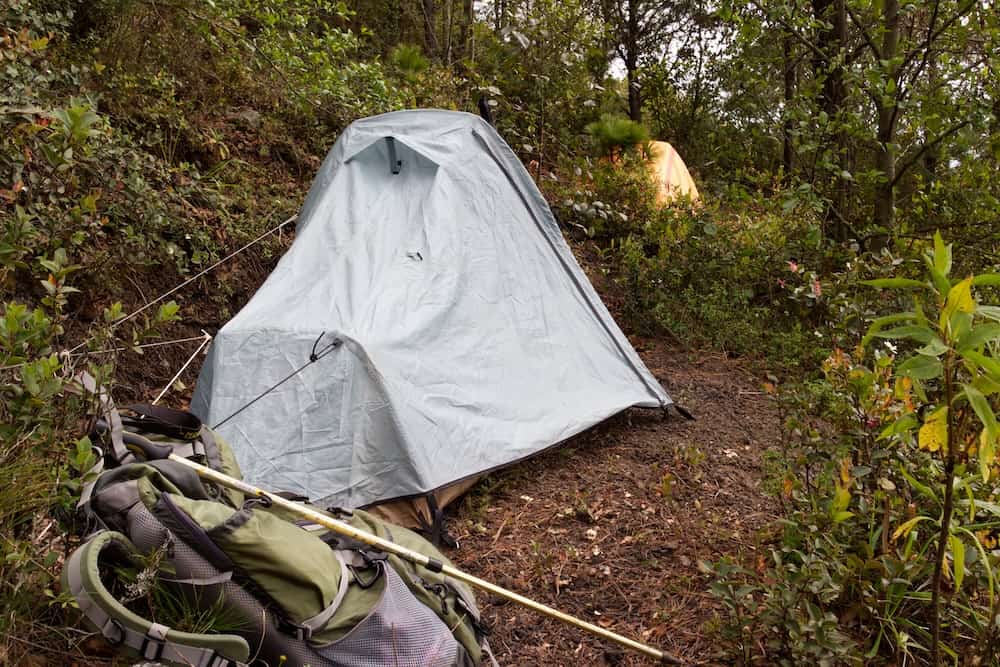
The forest base camp is located about 1,299 feet (396 meters) from the summit and is surrounded by trees and brush. Ten camping platforms have been dug out of the steep incline, offering an excellent flat area to pitch a tent.
Since it is less exposed than the summit, the weather and wind conditions aren’t as extreme here–which is the big perk.
During my trip, our local guides cut down dead wood with their machetes and got a campfire going for warmth and marshmallows. Our Ati Adventure guides strung fairy lights in the trees, fired up their camp stove, and spooned hot tomato sauce over our suppers. It was delightful.
There was no wind, so it wasn’t too cold. The stars were beautiful. And we managed to watch the sunrise from between the trees when our plans to summit in the morning were foiled. The views of San Pedro Volcano were stunning at golden hour.
Summit Camp
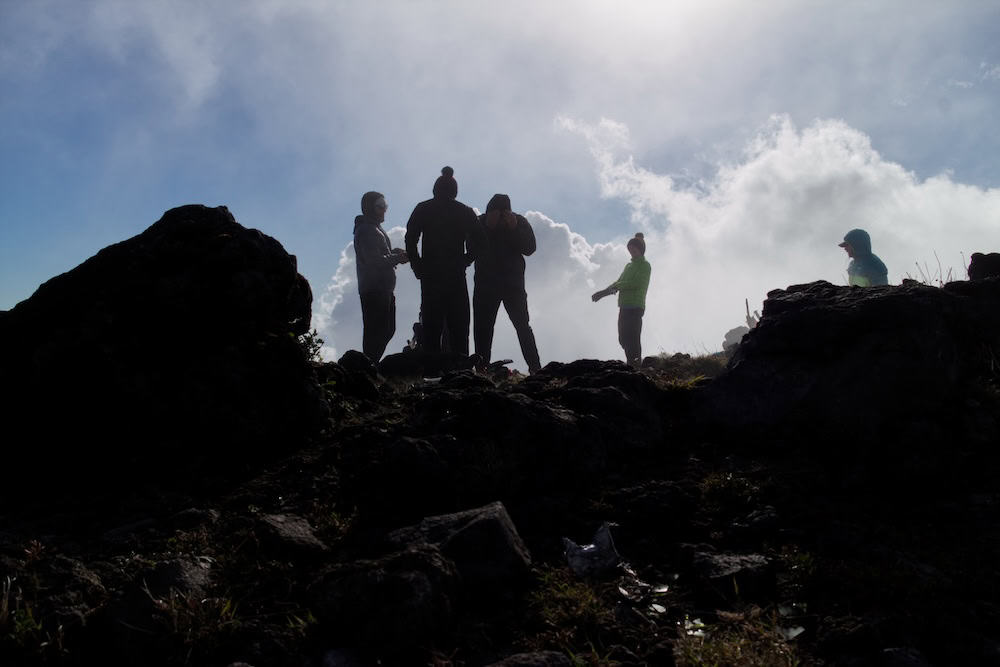
Camping at the summit is also an option. There are stone windbreaks dotted all over the peak, with flat spaces between their curved arms for pitching a tent. Steam vents send sneaky tendrils between the rocks.
The cold and wind will be extreme, so if you choose to camp at the summit, make sure you have lots of warm layers. Secure your tent with multiple guy lines to keep the poles from breaking.
Although I haven’t yet camped on the summit, friends tell me it is worth it to avoid hiking up for the sunrise.
How to Get to the Trailhead
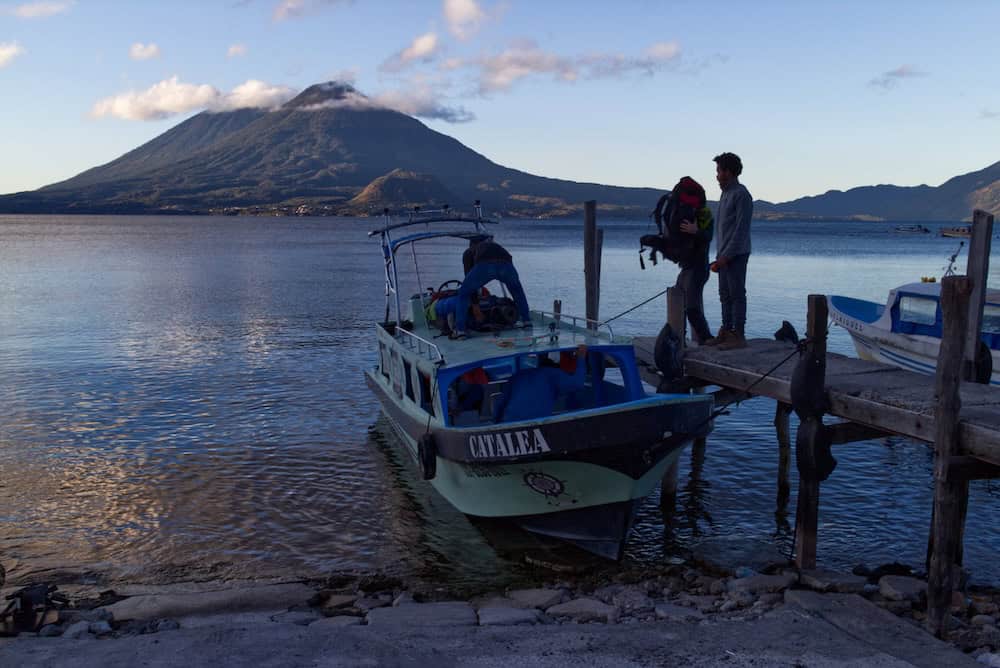
Take a Boat to Santiago
If you’re starting from Panajachel, you’ll first need to take a boat to Santiago Atitlán. If you have a big enough group, consider getting a private boat so you can leave early in the morning.
Boats leave for Santiago from the Tzanjuyú docks daily, starting at 6 am and running until about 5 pm. Rather than running on a strict schedule, they go when they are full. You may have to wait 45 minutes to an hour for the boat to fill.
The boat captains charge foreigners Q25 per person one way. If you’re a local, you may get away with paying less.
Note: The last boat from Santiago to Panajachel is between 4 and 5 pm. Some day hikers reported coming down too late to catch it. They had to find a hotel in Santiago or hire a private boat.
Get a Pickup to the Trailhead
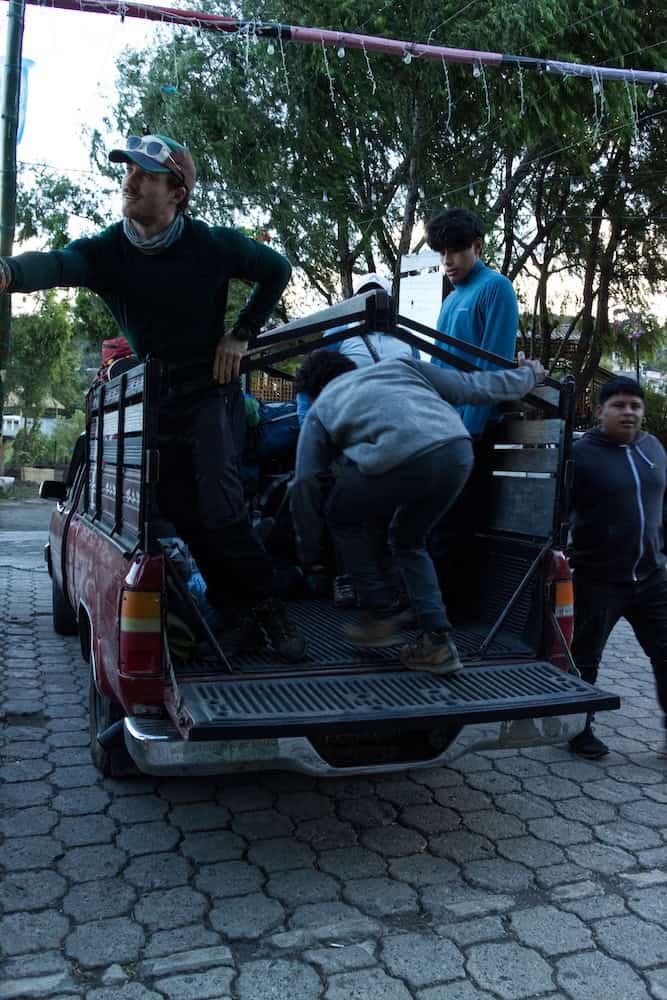
Next, catch a pickup or tuc-tuc up to the trailhead. It is noted on Google maps as “Ascenso Volcán Atitlán Ruta Chicacao.”
I don’t know exactly what this costs, but according to information from a reviewer on All Trails, a tuc tuc could cost Q40. I would expect a pickup ride to cost between Q5-20, but I haven’t done it myself to confirm.
Map with the Atitlán Volcano Trailhead Marked
The trailhead is on the road to Chicacao, several curves before the entrance to the Rey Tepepul Nature Reserve overlook.
Navigating the Trail up Atitlán
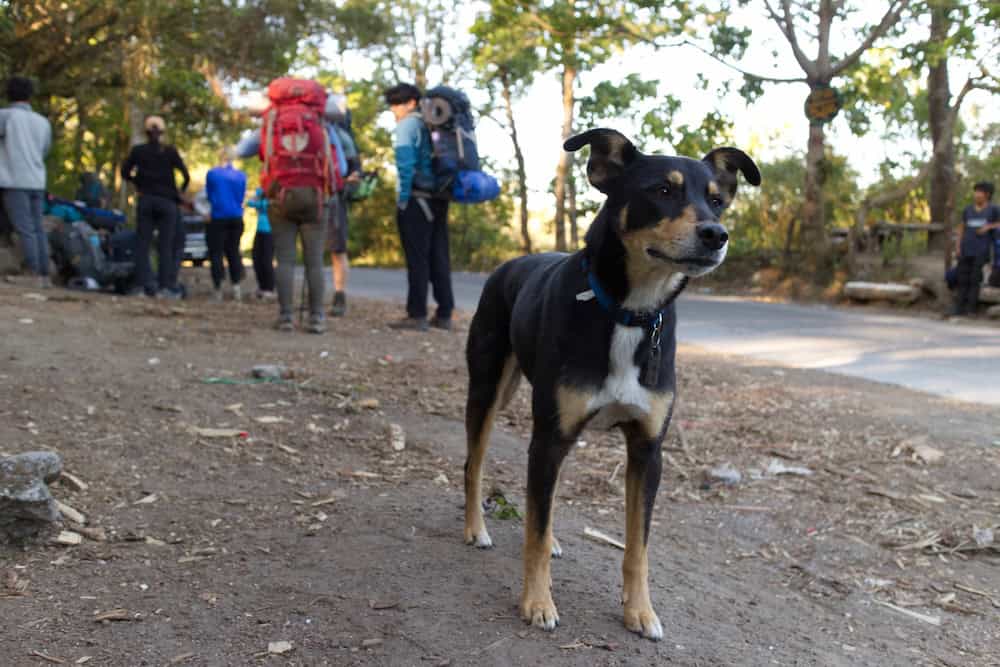
There are several farms where the trail starts. This is probably the part of the trail where it is easiest to go wrong.
Fortunately, the trail is marked regularly with red or silver tape on the trees and white and red arrows on tree trunks and rocks.
Some people have gotten lost on the volcano, however, so although it’s possible to hike it on your own, it is safer to go with a guide or a friend who knows the route, especially if you aren’t a seasoned hiker or are new to Guatemala.
What to Pack for for a Day Trip
Going up Atitlán Volcano for a day is a great choice if you don’t like camping or want a shorter excursion.
Remember: Always plan for rain! Pack your belongings in plastic bags or dry bags.
It’s common practice in Guatemala to hike volcanoes de asalto*. This means starting the hike between 10 pm and 1 am, climbing in the dark, and arriving at the summit in time to watch the sunrise. I’ve never done it (being very fond of sleeping at night), but it’s a good way to see the sunrise from the top without having to camp.
Others start early in the morning and hike up and down during daylight hours.
*The term “subir de asalto” has no English equivalent that I know of but connotes an aggressive approach to the hike. You’ll be attacking the climb, assault team style.
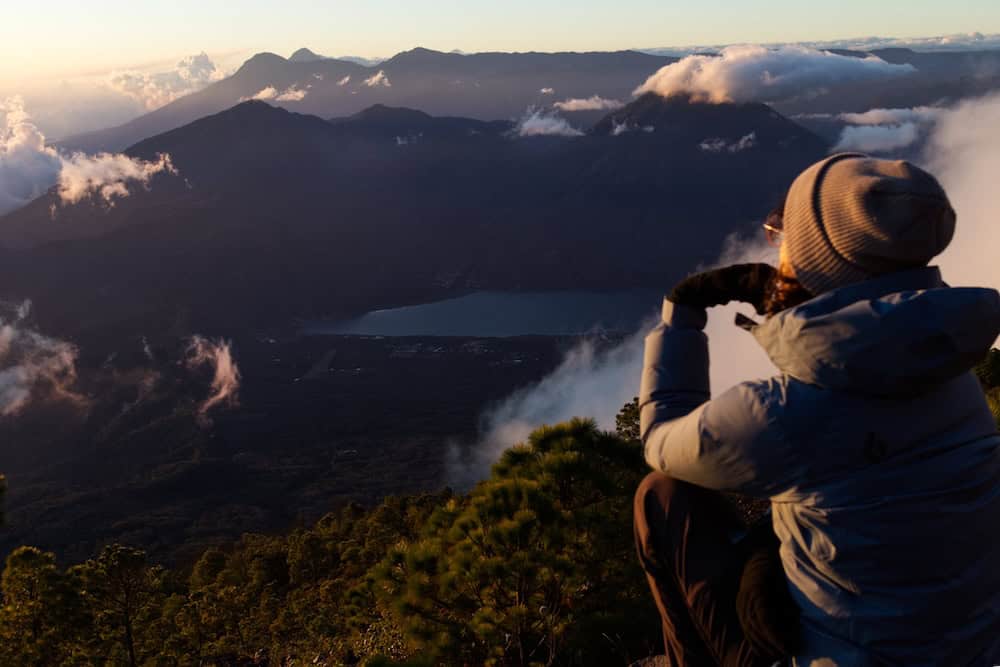
For the Hike
- Headlamp
- Walking stick/trekking poles
- 3 liters of water/electrolytes
- Meal/snacks
- Hiking boots with good traction
- Wicking shirt
- Long pants or shorts
- Tall socks
- Light sweater/windbreaker
- Sunglasses
- Hat
- Buff
For the Summit
- Knit hat, scarf, and gloves
- Warm sweater
- Windbreaker or rain jacket
- Warm pants
- Windbreaker or rain pants
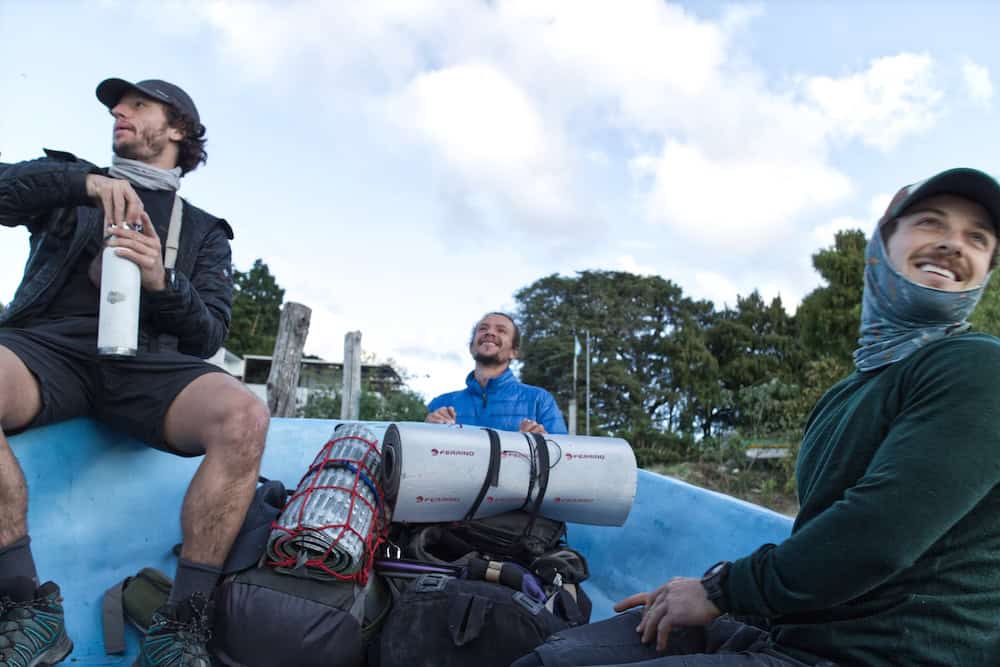
Personal Hygiene
- Toilet paper
- Hand sanitizer
- Sunscreen
- Chapstick
- Trashbag
- Personal medications
Optional Fun Stuff
- Camera with extra batteries and memory cards
- A small tripod
- Binoculars for birdwatching
Note: It’s always a good idea to have a first aid kit and emergency supplies.
What to Pack for an Overnight
If you enjoy the experience of camping, an overnight up Atitlán Volcano could be a fantastic choice.
Remember: Always plan for rain! Pack your belongings in plastic bags or dry bags.
Certain tours and guides might provide some of these things. If you’re hiking with groups of friends, coordinate among yourselves to split up the weight of the tents and cooking supplies. Make sure at least one person has a first aid kit.
Remember to also take money, ID, and your phone.
Camping Equipment
- 55 to 65-liter hiking backpack
- A 3-season Tent (I.e., one with a rain fly that completely covers the tent)
- Sleeping mat
- Zero Degree sleeping bag (0ºC or 32ºF)
- Headlamp
- Walking stick/trekking poles
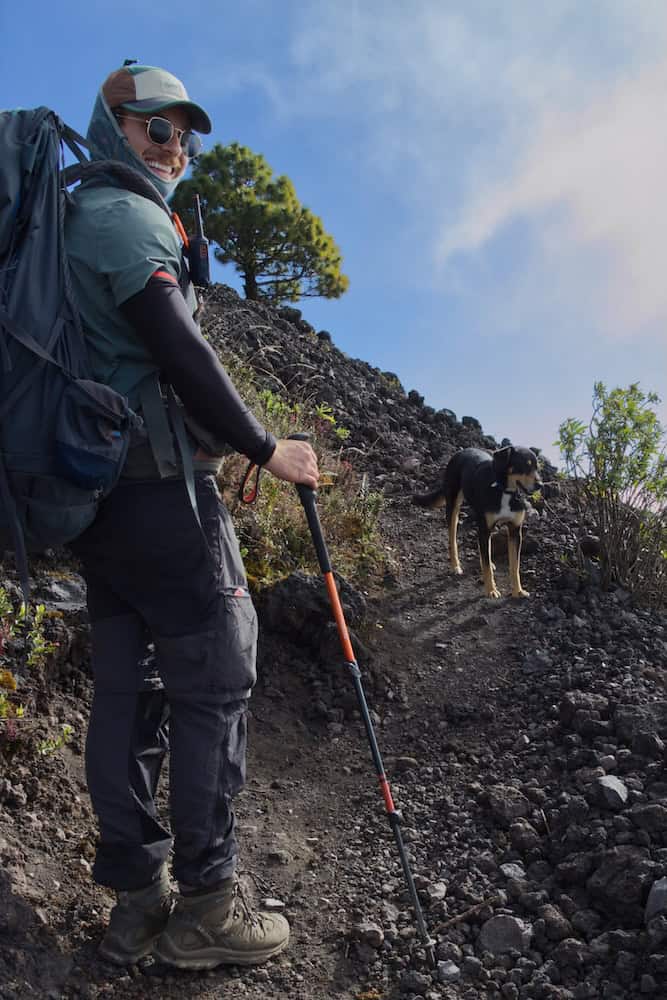
If not accompanied by a guide, you may also want:
- Camp stove
- Lighter
- Pot
- Stir stick
- Mug
- Tea/hot chocolate/coffee
Food and Water
- 4-5 liters of water/electrolytes per person
- Meals and snacks
Clothes and Footwear
For the Hike
- Hiking boots with good traction
- Wicking shirt
- Long pants or shorts
- Tall socks
- Light sweater/windbreaker
- Sunglasses
- Hat
- Buff
For the Summit
- One complete change of clothes
- Extra socks
- Knit hat, scarf, and gloves
- Light shoes for the campground (optional)
- Three-layer system for the upper body:
- Long-sleeved thermal shirt
- Warm sweater
- Windbreaker or rain jacket
- Three-layer system for the lower body:
- Thermal leggings
- Warm pants
- Windbreaker or rain pants
Personal Hygiene
- Toilet paper
- Hand sanitizer
- Sunscreen
- Chapstick
- Wet wipes
- Toothpaste and toothbrush
- Trashbag
- Personal medications
First Aid Kit
If you’re going with a guide, they might have a first aid kit. If not, take your own. I recommend:
- Pain killers
- Pills for diarrhea
- Basic wound care supplies
- Waterproof tape for blisters (and maybe talc as well)
- Electrolyte packets (available in pharmacies, just as for “suero en sobres”)
- Emergency Blanket
Optional Fun Stuff
- Camera with extra batteries and memory cards
- A small tripod
- Binoculars for birdwatching
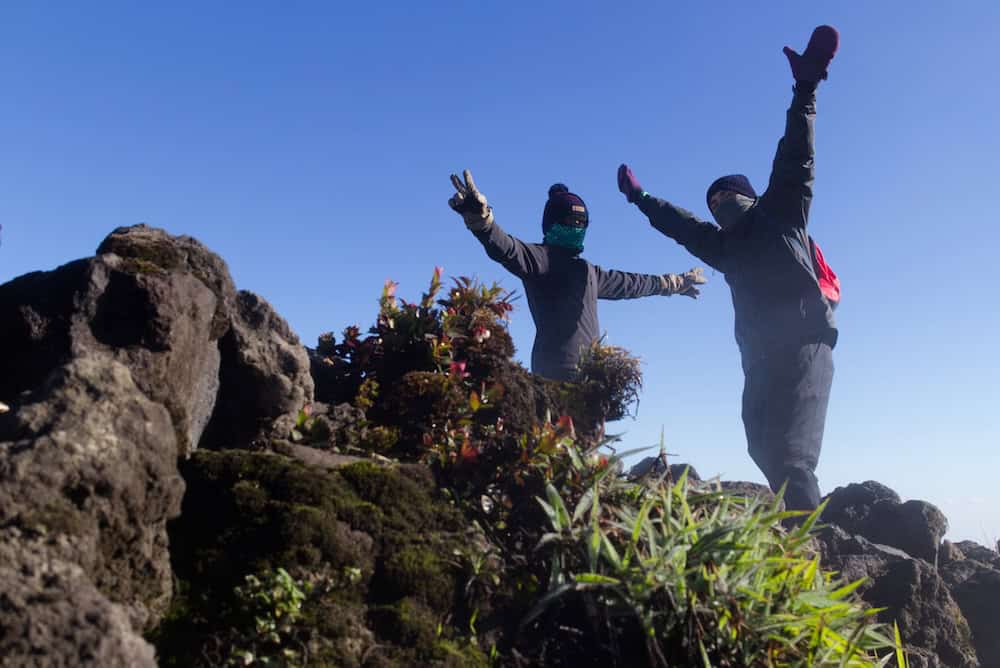
Other Guatemala Volcano Hike Posts
- Hiking Acatenango On Your Own
- 7 Best Acatenango Hike Tour Companies
- Acatenango Hike Difficulty
- Volcano Hiking with a Dog
- 12 Best Pacaya Volcano Tours from Antigua
- Volcán San Pedro Hike – Risks & Rewards
Posts About Other Things to Do in Atitlán
35 Amazing Things to Do in Lake Atitlán
Santa Cruz la Laguna:
37 Spectacular Things to do in Santa Cruz la Laguna
Where to Stay in Santa Cruz la Laguna Guatemala
San Juan la Laguna
25 Magical Things to Do in San Juan la Laguna
Community Tourism Opportunities in Atitlán
Panimatzalam *Community Tourism*
Parque Ecológico Chuiraxamolo – Economical Adventures
Atitlán Volcano Hike FAQS
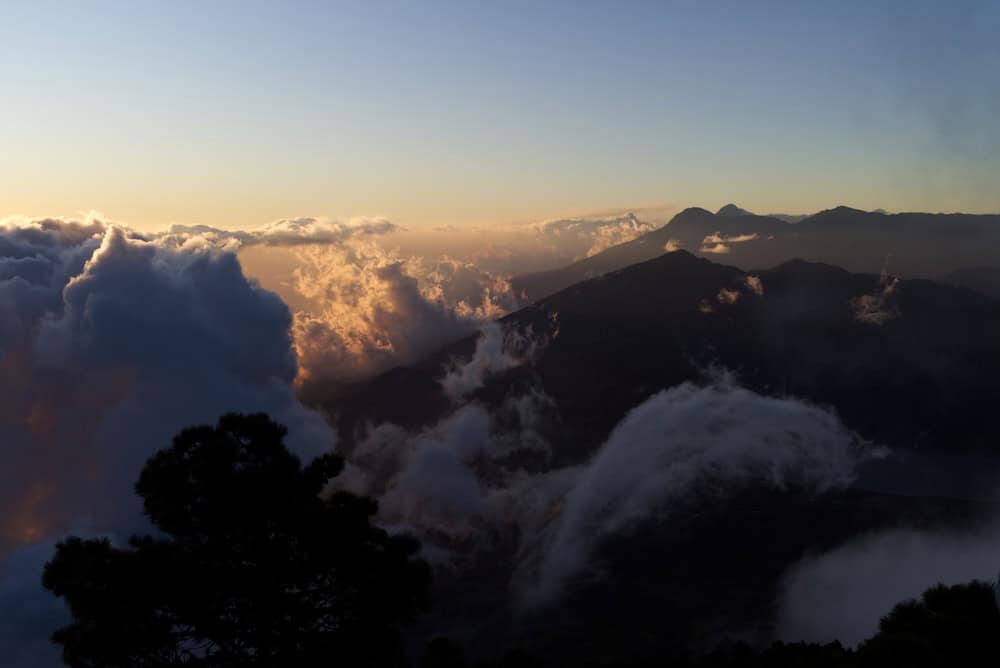
It takes between three and eight hours to hike up Atitlán Volcano. Five or six is a good average. How fast you can climb will depend on your fitness, the weight of your packs, and the weather conditions.
Robberies aren’t a problem on Atitlán Volcano, but some hikers have experienced severe dehydration, hypothermia, or gotten lost—and had to be rescued by the volunteer fire department. Be sure to pack sufficient water, warm clothing, and an adequate tent. Hire a guide so you don’t get lost.
Final Thoughts
Push your muscles to the limit and enjoy the raw beauty of nature.
Although the Atitlán Volcano hike is challenging, nothing compares to standing on the summit with the coastal plains at your back, volcanoes poking through the clouds on either side and the lake stretching below. So, what do you think? Are you reading to tackle it?
